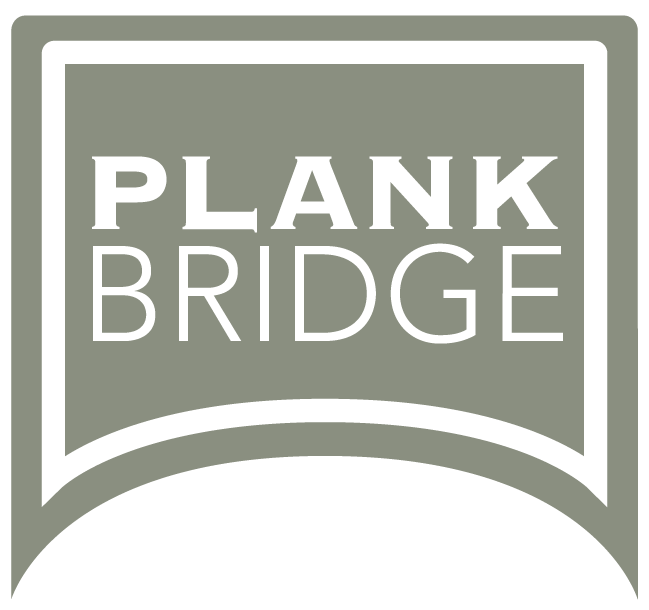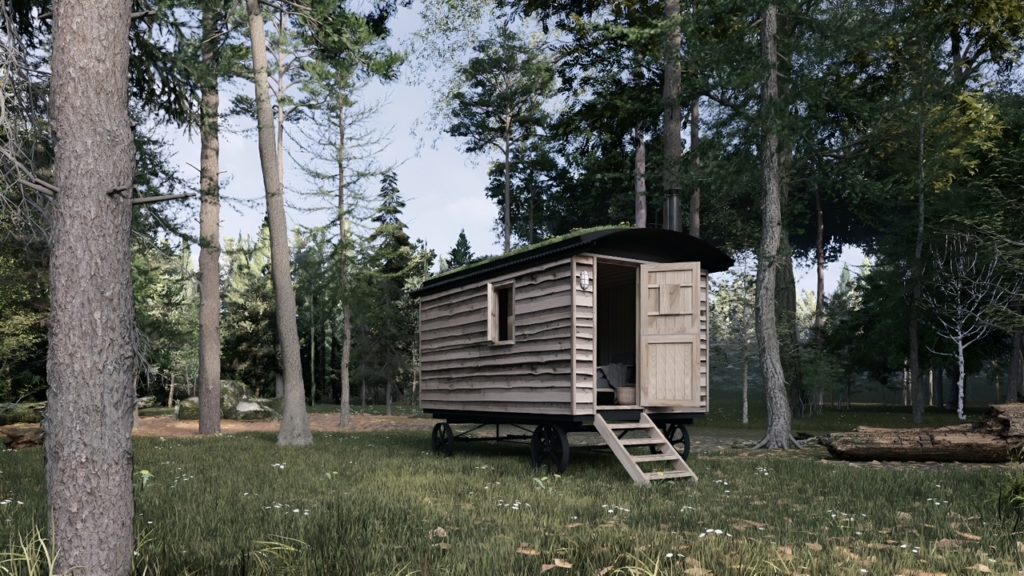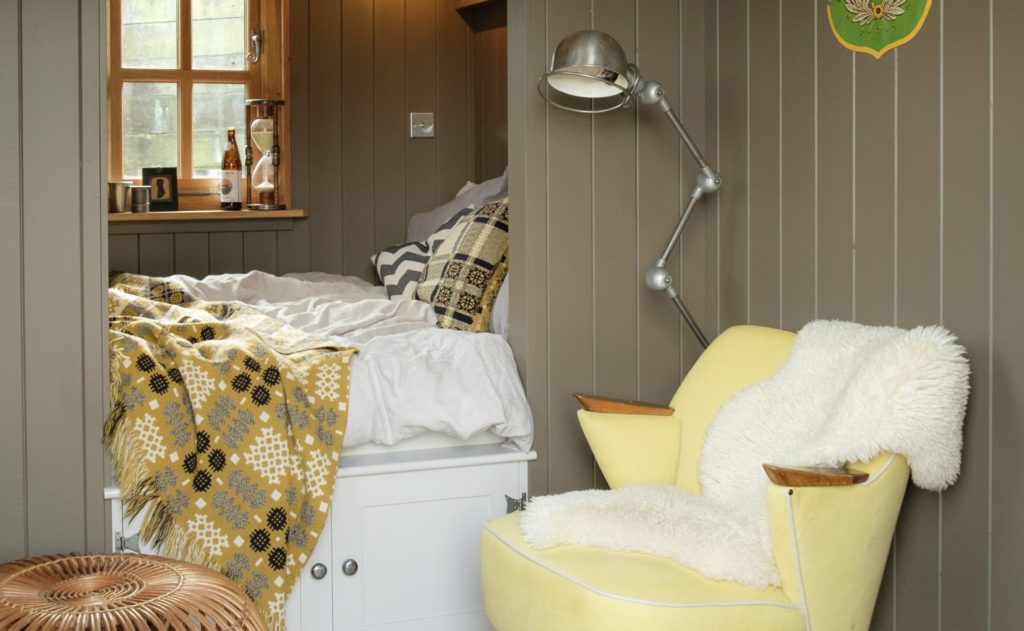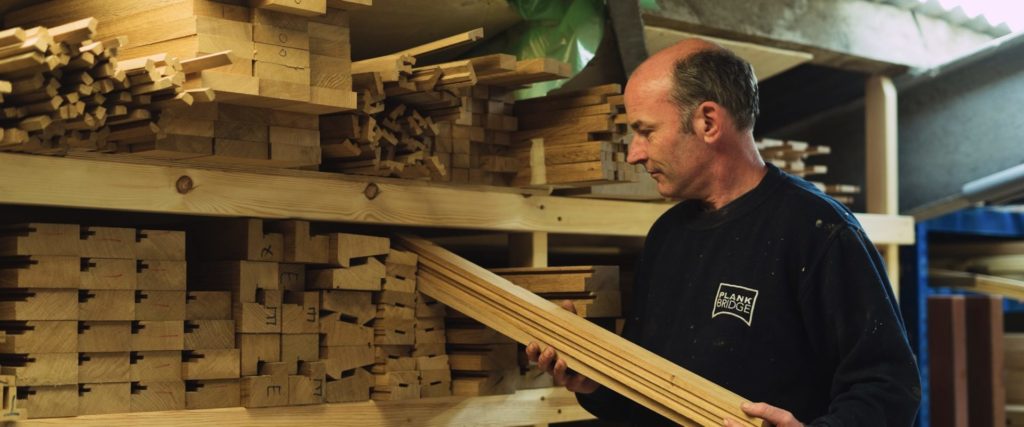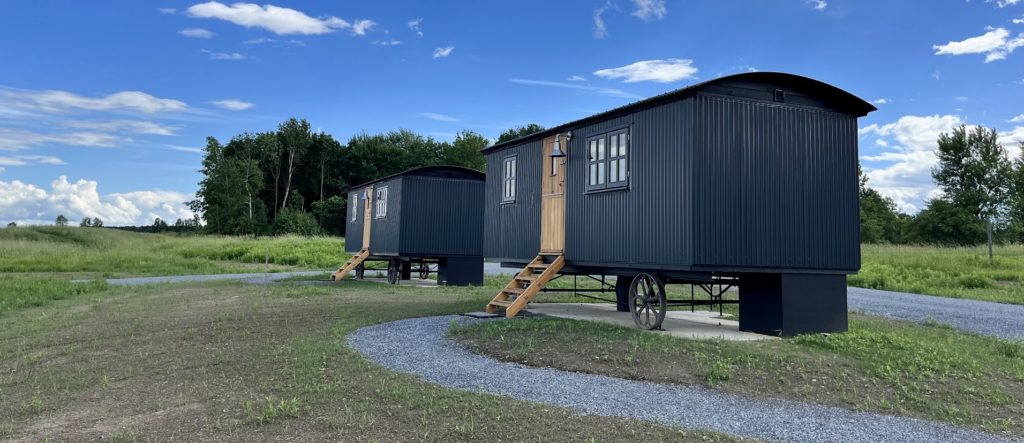We often tell our customers that selecting the perfect shepherd’s hut colour is as personal and important as choosing the right shade for a room in their own home. Colour is a reflection of individual style and personality, and it has the power to transform a space, whether blending harmoniously with its surroundings or creating a bold, standout feature in the landscape.
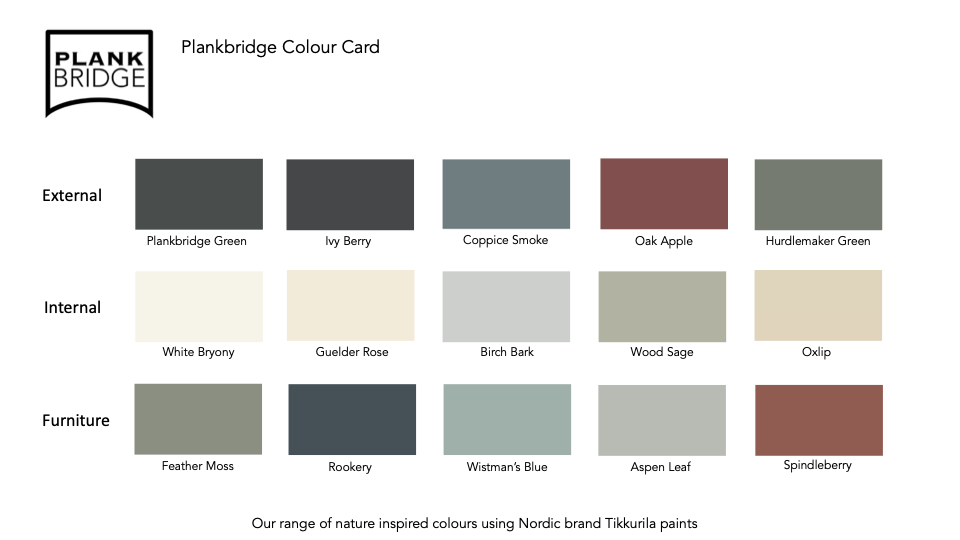
Many of our customers are drawn to the natural tones found on the Plankbridge colour card – shades that are inspired by the beauty of the natural world, such as Wood Sage, Coppice Smoke and the ever-popular Wistman’s Blue, which takes its name from the lichens that cling to the ancient oaks of Wistman’s Wood on Dartmoor. Another favourite is Hurdlemaker Green, named in honour of a dear friend of Richard and Jane – a skilled hurdlemaker whose wisdom, warmth – and love of Marmite and watercress sandwiches – will never be forgotten here at Plankbridge.


If you are after a more classic or dramatic aesthetic, Ivy Berry and Plankbridge Green offer darker tones. Inspired by the traditional use of pitch (also known as bitumen or tar), which farmhands would apply with a brush back in the day to protect the galvanised metal, these beautifully deep shades are a surprisingly versatile colour in the landscape – receding rather than standing out in their surroundings by mimicking the shadows created by trees and hedgerows and creating a link with the past.
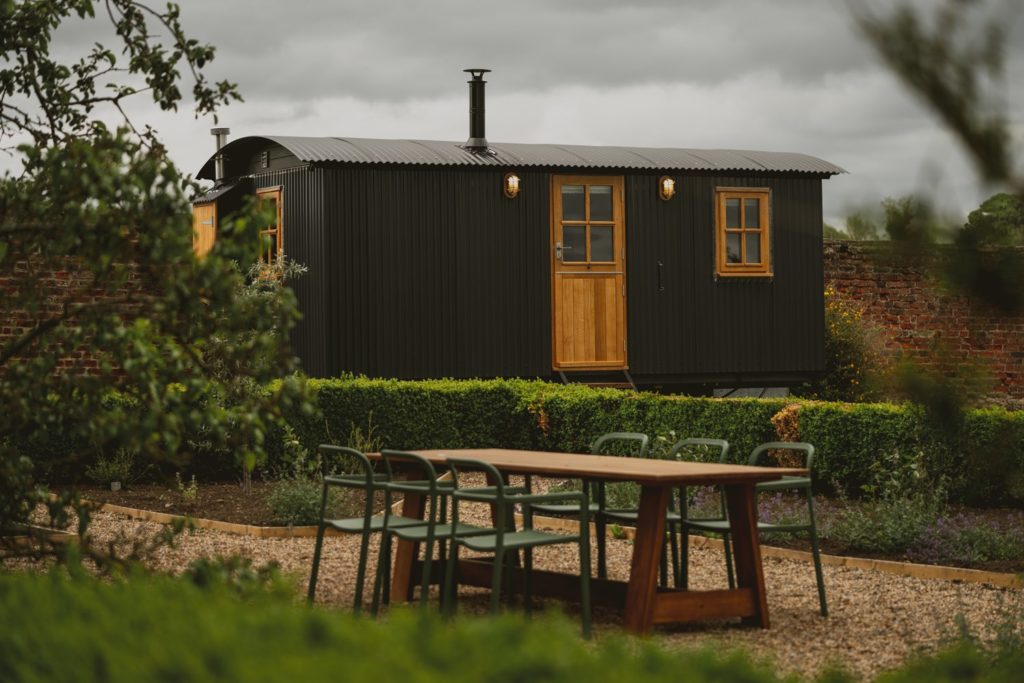
For those with a bolder, brighter vision in mind, we also offer the flexibility to choose a custom shade from a paint brand of your choice. Over the years, we have painted huts in a variety of striking colours, from garden designer Matthew Childs’ vibrant red hut, nestled beside his natural swimming pool, to a buttercup-yellow hut at Glamping at Wallops Wood, and a hut the colour of purple heather, which recently relocated from its lochside home in Scotland to, fittingly, a new resting place amid the heathland of the Purbecks. And then there was the RHS Bothy hut, which we took to RHS Chelsea Flower Show 2023 and now resides proudly at RHS Garden Wisley – a beautiful shade of aubergine, as chosen by the garden designer Pollyanna Wilkinson for its debut in the Great Pavilion.

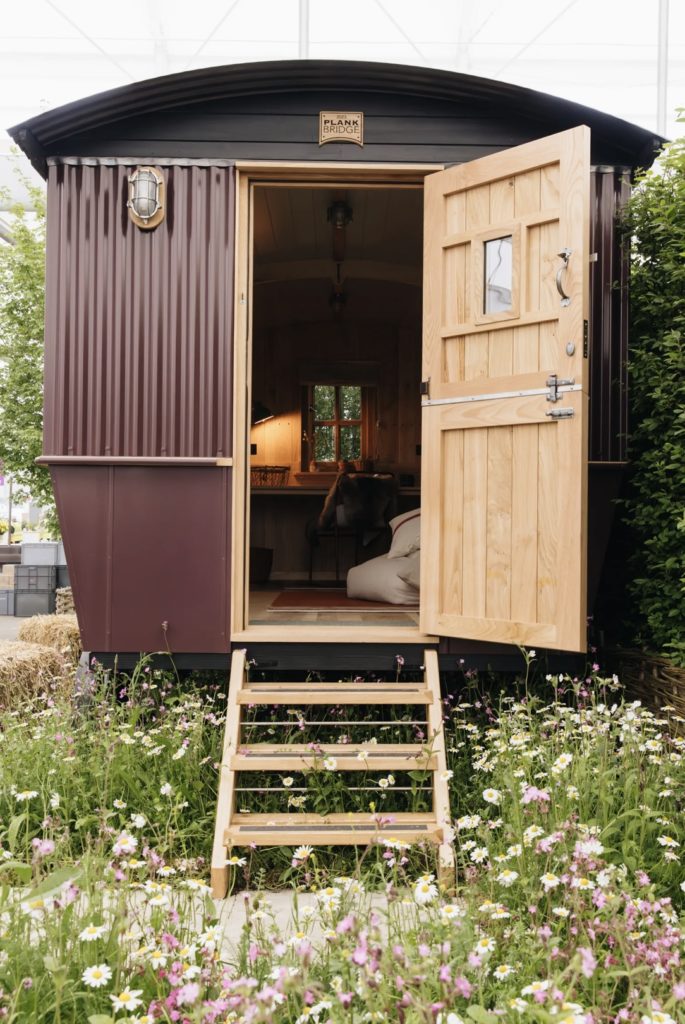

For customers seeking even greater individuality, we also offer bespoke colour matching. Whether inspired by a piece of driftwood from the Isles of Scilly, a family heirloom, or a colour found in nature, we can help translate your vision into a hue that will make your shepherd’s hut truly your own. Whatever your style – whether understated, bold, or entirely custom – our talented design team can guide you through the process, ensuring your shepherd’s hut not only reflects your taste but also becomes a cherished part of the landscape.
